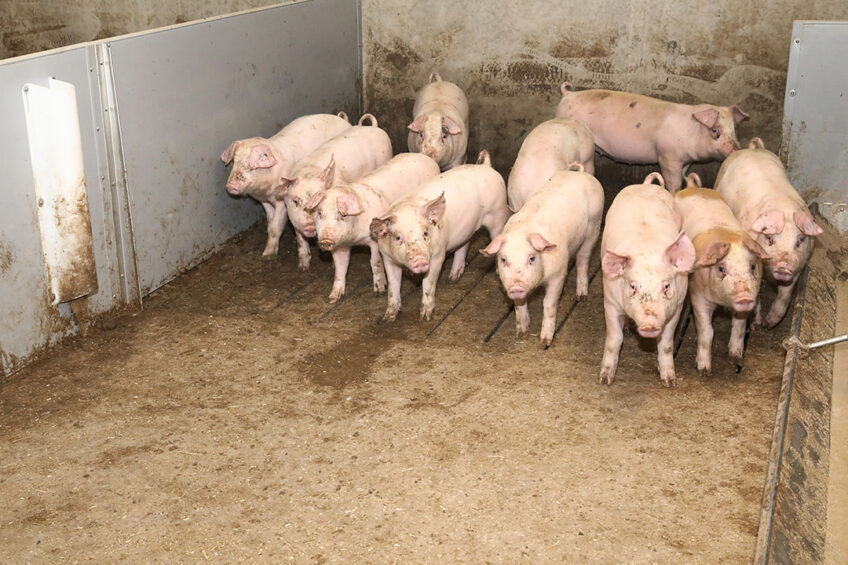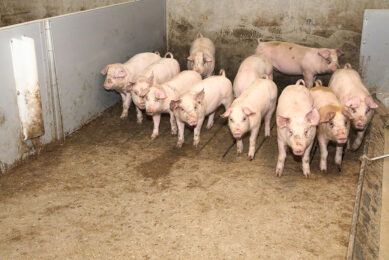Genetic resistance: the first choice of PRRS prevention

There is no doubt that Porcine Reproductive and Respiratory Syndrome (PRRS) has been one of the most influential viral pig diseases in the past few decades. How good would it be if pigs were simply resistant to the virus? Researchers around the globe have been taking steps in that direction for many years.
PRRS is a major disease limiting the development of large-scale pig production systems, thus leading to massive economic losses of about US$ 650 million annually. That excludes costs for diagnosis, vaccination, treatment and biosecurity. PRRS virus is categorised by easy mutation and recombination of genome, immunosuppression, enhanced antibody dependence and persistent infection. This makes its prevention, control and elimination challenging. Additionally, increased pig breeding density and the continuous use of antibiotics have led to bacterial resistance and significant reduction in pig genetic improvement efficiency.
Therefore, identifying susceptibility/resistance genes, breeding for disease resistance and improving disease resistance are effective strategies for fundamental prevention and control of PRRS.
Variation in PRRS susceptibility
Susceptibility/resistance to PRRSv is different among various pig breeds and individuals. Factors that affect susceptibility to PRRSv include environment; pig nutrition and health status; PRRSv virulence; and genetic factors of the host, such as single nucleotide polymorphisms of PRRSv receptor genes and host genes associated with innate and acquired immunity.
Improving genetic resistance to PRRSv
Advanced knowledge of the pig genome and the molecular basis of genetic resistance and new tools and technologies are required to create new methods to dissect the genetic control of host responses to PRRSv. Since classical breeding is inefficient in improving genetic resistance to PRRSv, responsible gene variants need to be identified via experiments in selected populations that vary significantly in resistance/susceptibility under standardised environmental conditions.
After identifying the responsible gene variants, the next step is to validate causal variants in experimental populations on commercial farms to verify segregation and association before application in selection. Then a detailed look is taken at the genetic distinctiveness of pigs varying the most in susceptibility/resistance. Finally, breeders can be selected using marker-assisted and genomic selection.
QTL associated with resistance to PRRSv
Quantitative trait loci (QTL) are gene loci participating in the control of quantitative distributed traits such as disease resistance. More than 2,500 QTL have been identified for health parameters in pigs, among them 400 for resistance/susceptibility to a broad range of pathogens. The QTL analysis and genome-wide association study are used to identify chromosomal areas and single nucleotide polymorphisms associated with PRRS phenotypes, including degree of viremia, lung lesions and performance after PRRSv infection. More than 30 QTL associated with PRRSv resistance/susceptibility have been mapped to 11 chromosomes. In addition, a major QTL region was mapped to chromosome 4, explaining 16% of genetic variance for virus load with a heritability of 0.30.
Candidate genes for PRRSv resistance
The interferon-induced guanylate-binding protein 5 gene (GBP5) is identified as the most likely candidate gene for PRRSv resistance, which is for the QTL on chromosome 4. The GBP5 is involved in immune response to bacterial and viral infection, the inflammatory response and the assembly of inflammation in pigs. A second candidate gene potentially involved in PRRSv resistance, with the valuable allele preferentially restricted to Chinese autochthone breeds, is the ubiquitin-specific protease 18 USP18.
To detect candidate genes for PRRSv resistance, it is essential to have basic knowledge regarding molecules involved in PRRS pathogenesis. Recognition of specific cell receptors – including CD163, CD169 and CD151 – is critical in PRRSv infection, and successful viral entry depends on receptor utilisation.
CD163 and PRRSv
CD163 is the attachment and internalisation receptor of PRRSv, which is expressed in activated tissue macrophages and is upregulated by pathogen-associated molecules and stress. One major function of CD163 is to deliver extracellular substrates such as PRRSv to the scavenger cells for intracellular metabolism.
CD163 is capable of conferring PRRSv permissiveness to cell lines unsusceptible to PRRSv, independent of the PRRSv genotype involved. Downregulation of CD163 in susceptible cells blocks PRRSv infection. Furthermore, transferring CD163 sequences from the pigs’ genome transfers PRRSv resistance to pigs.
CD169 and PRRSv
CD169 is a transmembrane glycoprotein, a lectin, restricted to activated tissue macrophages and involved in cell–cell interaction. Expression can be induced in macrophages during the inflammatory process. The CD169 receptor plays an auxiliary role in PRRSv infection process through facilitation of pathogen interactions, uptake and attachment of PRRSv together with heparin sulphate, and internalisation, but not replication of the virus.
A gene-editing experiment deleting CD169 leads to full PRRSv-permissive macrophages and unaltered viraemia and antibody production in the pigs. It shows that CD169 is not required for PRRSv infection, and the absence of CD169 gene neither prevents PRRS nor alters PRRSv pathogenesis.
CD151 and PRRSv
CD151 is a key receptor for PRRSv infection that is involved in various cell functions and cell signalling. Silencing CD151 makes susceptible cells resistant, while overexpression of this gene makes resistant cells susceptible to PRRSv. Blocking CD151 by microRNA prevents cells from being infected by PRRSv.
Gene editing in PRRSv resistance
Gene editing can introduce mutations to the genome – without adding any footprints associated with the technology – that can be used to generate genetic resistance to combat PRRS. The tremendous all-or-nothing-principle of CD163 on PRRSv replication could provide a unique and widespread solution to the PRRS problem. Studies showed that detecting and knocking out CD163 receptors using CRISPR/CAS9 technology will make the host completely immune to PRRSv.
CRISPR/CAS9 combines an endonuclease with a specific short guiding RNA sequence. This sequence provides accurate specificity. The linked enzyme can cleave and modify the DNA at exactly the position targeted by the short guiding RNA sequence. In addition, replacing the CD163 SRCR5 domain with the human CD163-like SRCR8 domain resulted in genotype 1 PRRSv resistance.
Concluding remarks
Resistance to PRRSv by detecting and knocking out CD163 as the receptor responsible for PRRSv replication in pigs is a milestone in swine production systems. Complete or partial elimination of PRRSv replication would significantly impact health, welfare and production performance of swine herds. However, further research is needed to focus on the complete function of the receptor and its reasonable modification and on recognising other favourable and unfavourable gene variants involved in immunological pathways.
* References are available upon request.
 Beheer
Beheer








 WP Admin
WP Admin  Bewerk bericht
Bewerk bericht